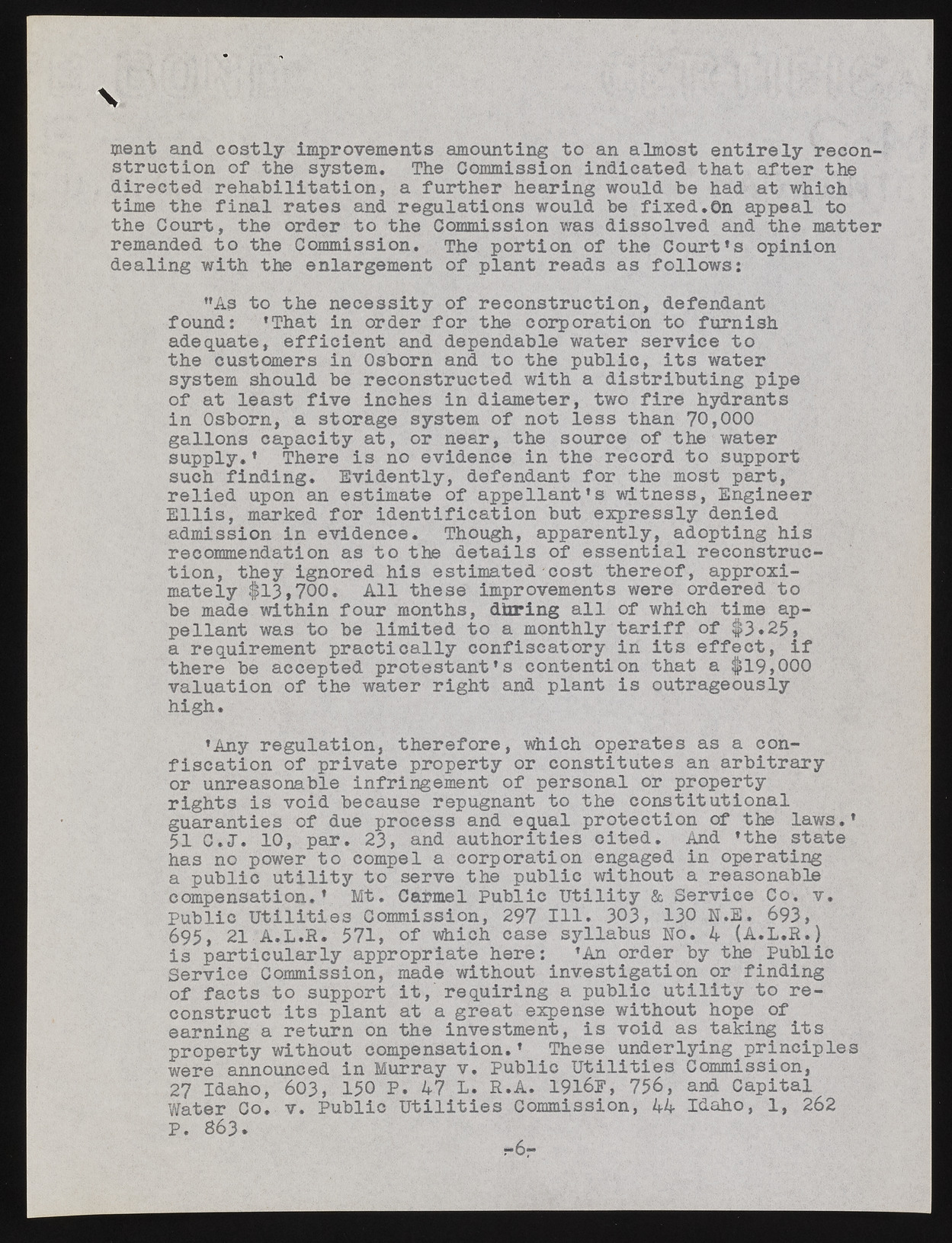Copyright & Fair-use Agreement
UNLV Special Collections provides copies of materials to facilitate private study, scholarship, or research. Material not in the public domain may be used according to fair use of copyrighted materials as defined by copyright law. Please cite us.
Please note that UNLV may not own the copyright to these materials and cannot provide permission to publish or distribute materials when UNLV is not the copyright holder. The user is solely responsible for determining the copyright status of materials and obtaining permission to use material from the copyright holder and for determining whether any permissions relating to any other rights are necessary for the intended use, and for obtaining all required permissions beyond that allowed by fair use.
Read more about our reproduction and use policy.
I agree.Information
Digital ID
Permalink
Details
More Info
Rights
Digital Provenance
Publisher
Transcription
\ ment and costly improvements amounting to an almost entirely reconstruction of the system. The Commission indicated that after the directed rehabilitation, a further hearing would be had at which time the final rates and regulations would be fixed.On appeal to the Court, the order to the Commission was dissolved and the matter remanded to the Commission. The portion of the Court’s opinion dealing with the enlargement of plant reads as follows: "As to the necessity of reconstruction, defendant found: ’That in order for the corporation to furnish adequate, efficient and dependable water service to the customers in Osborn and to the public, its water system should be reconstructed with a distributing pipe of at least five inches in diameter, two fire hydrants in Osborn, a storage system of not less than 70,000 gallons capacity at, or near, the source of the water supply.’ There is no evidence in the record to support such finding. Evidently, defendant for the most part, relied upon an estimate of appellant’s witness, Engineer Ellis, marked for identification but expressly denied admission in evidence. Though, apparently, adopting his recommendation as to the details of essential reconstruction, they ignored his estimated cost thereof, approximately $13,700. All these improvements were ordered to be made within four months, dhring all of which time appellant was to be limited to a monthly tariff of $3*25, a requirement practically confiscatory in its effect, if there be accepted protestant’s contention that a $19,000 valuation of the water right and plant is outrageously high. ’Any regulation, therefore, which operates as a confiscation of private property or constitutes an arbitrary or unreasonable infringement of personal or property rights is void because repugnant to the constitutional guaranties of due process and equal protection of the laws.’ 51 C.J. 10, par. 23, and authorities cited. And ’the state has no power to compel a corporation engaged in operating a public utility to serve the public without a reasonable compensation.’ Mt. Carmel Public Utility & Service Co. v. Public Utilities Commission, 297 111. 303, 130 N.E. 693, 695, 21 A.L.R. 571, of which case syllabus No. 4 (A.L.R.) is particularly appropriate here: ’An order by the Public Service Commission, made without investigation or finding of facts to support it,' requiring a public utility to reconstruct its plant at a great expense without hope of earning a return on the investment, is void as taking its property without compensation.’ These underlying principles were announced in Murray v. Public Utilities Commission, 27 Idaho, 603, 150 P. 47 L. R.A. 1916E, 756, and Capital Water Co. v. Public Utilities Commission, 44 Idaho, 1, 262 P. 863. -6r

